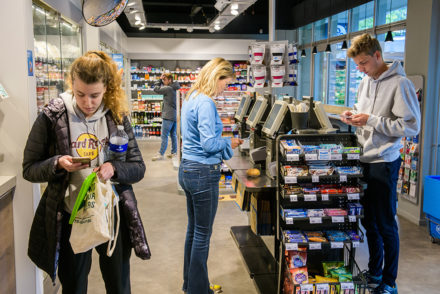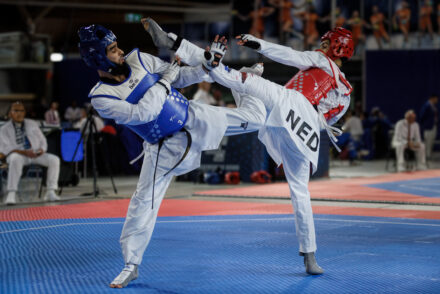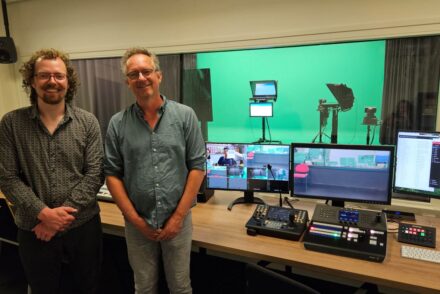Elections at the university: how does it actually work?
At the end of April, students may again vote for the university’s participation councils. But what exactly happens to your vote? And why do universities hold elections at all?
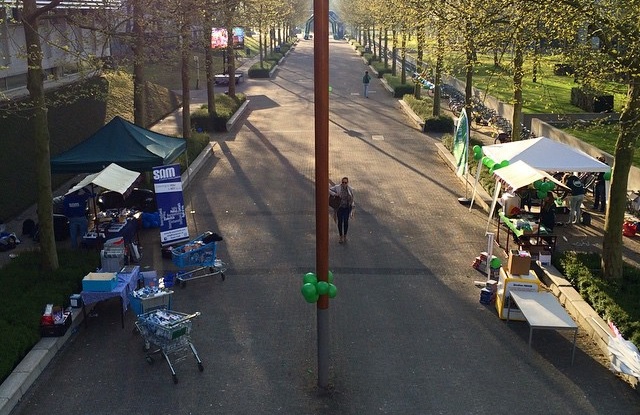
The national elections are just behind us, but the elections for the participation bodies at Tilburg University are fast approaching. From April 28 through 30, students can vote for one of the student parties. For many, this comes as a surprise every year. Voting at a university? For what? And why?
Employee participation is an important part of the university, but this is far from common knowledge. Universities are democracies, not corporations. And that means that as a student, you too have an influence on what happens at a university.
It helps to imagine the university as a miniature version of the United States. There, policy is made at the federal level, but individual states also have a relatively large amount of freedom of their own to make choices.
Five Schools
The same is true of the university. It consists of a number of Schools. In Tilburg, there are five: Tilburg School of Economics and Management (TiSEM), Tilburg Law School (TLS), Tilburg School of Social and Behavioral Sciences (TSB), Tilburg School of Humanities and Digital Sciences (TSHD), and Tilburg School of Catholic Theology (TST).

Each School has its own students, lecturers, and scientists. For example, TiSEM has roughly 7,000 students and employs 400 scientists, who in turn are divided among several Departments. At the head of each School is a Dean.
University Council
Each School sails its own course, but is ultimately accountable to the Executive Board (EB), with Wim van de Donk as President and Rector Magnificus. The Executive Board manages Tilburg University at the central level. Or, to maintain the comparison with the United States, at the federal level.
But the EB does not make decisions on its own. It does so within the University Council. This consists of nine employees and nine students of the university. They are united in parties and are elected annually (students) or biennially (employees, the next time in 2022) via elections. The Council joins the Board in the deliberation, gives criticism and advice, and can give its consent to or reject proposals.
Student and employee parties
Tilburg University has two student bodies at the central level, also known as parties: Party SAM and Party Front. Party SAM is currently the largest, with five members (seats) in the Council. Party Front has four seats. For years, Front was the largest Party, until SAM took over during the elections last year. Both parties have their own vision, which is laid down in a party program. Although they differ in points, they both represent the interests of the student in the University Council.
For example, the student parties ensure that there are enough workstations for students. But they also have a say in the improvement of education or the presence of enough student psychologists.
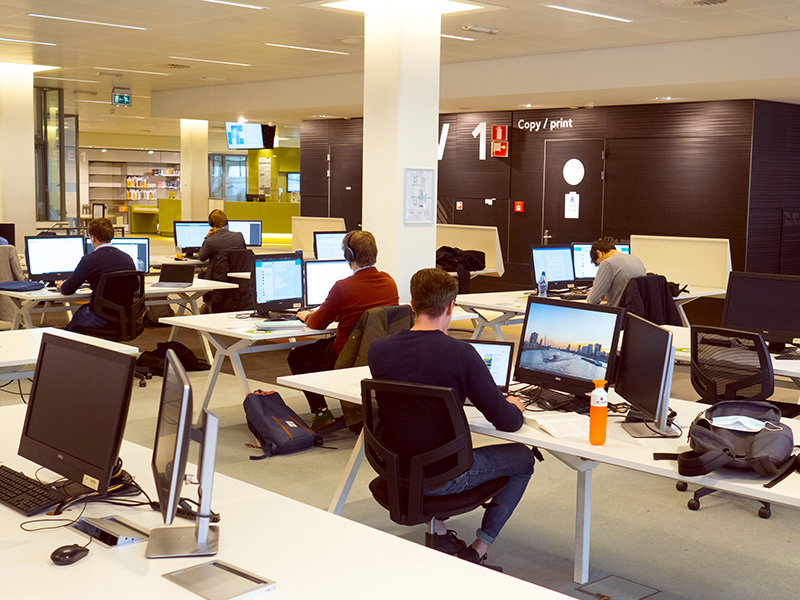
In addition to the student parties, two employee parties are also active in the University Council: Party Onhankelijken (Independents) and Party TiU International. The first party has six seats and the second party has three. Together they ensure that the voice of all employees at the university is heard.
Transparency
Decision-making at the university is therefore democratic and through free elections. Because of this, the meetings of the University Council are public: you can simply attend them if you wish. A well-functioning democracy is a transparent and verifiable democracy. This is also the reason that Univers exists: no free democracy without independent journalism.
Not only at the central level, but also at the decentralized level, within the Schools, decision-making is democratically organized. This takes place within the School Councils. Here too, student and employee parties are active.
So when you vote as a student in late April, you can vote both for SAM or Front and for one of the student groups on School level: Dante (TSHD), Vrijspraak (TLS), ECCO (TiSEM) and Stimulus (TSB). Since a year, Party Front is also active within the Schools with its so-called Active parties.
Karl Marx University
This year, Tilburg University is celebrating the 50th anniversary of participation. A unique feature: the democratic organizational culture that characterizes Dutch universities today has its roots in Tilburg.
In the 1960s, students were increasingly critical of the hierarchical structure of universities. An uprising followed: from April 28 until May 7, 1969, the university (then the Katholiek Economische Hogeschool) was occupied. Students demanded right of co-determination in the university’s administration.

Before this, students disrupted lectures and threatened to take action, but now they had had enough. The Auditorium was stormed, students set up a Hogeschool council on the spot in which decisions were made by majority vote.
To this day, one photograph symbolizes the nonviolent uprising at Tilburg University. It shows the facade of the Cobbenhagen building, on which the letters Karl Marx Universiteit are painted. The photo was not taken during the uprising, but in February 1969, by photographer Rien Siers. Nevertheless, the photo symbolizes the student revolution in Tilburg.
Maagdenhuis occupation
Shortly after the uprising in Tilburg, the Maagdenhuis occupation took place in Amsterdam. This took place from May 16 until 22, 1969 and is much better known. However, the beginning of the student uprisings in the 1960s is really in Tilburg.
The occupation in Tilburg was the starting shot for the democratization of higher education, later enshrined in the University Administration (Reform) Act. The elections that take place annually on the Tilburg University campus did not happen just like that. Fifty years ago, a revolt had to precede them.
Campaigns and attendance
Not all students are aware of the participation system at Tilburg University and the fact that they can influence the Board with their vote. But something of the revolution of the 1960s still echoes through.
For example, the election campaigns of the student parties Front and SAM are famous. Because of the coronavirus, this year’s elections and campaigns are held entirely online, but normally, around election time, the campus turns blue (SAM) and green (Front) and representatives of both parties can be found all over campus, ready to persuade students to vote for their parties.
Turnout at Tilburg’s elections is also structurally high compared to other universities, above forty percent. Unfortunately, many universities nowadays struggle to get students to the ballot box. Erasmus Magazine (Rotterdam), for example, wrote in 2017 about the “disturbingly low turnout” at the elections (10.3 percent).
Pay attention
Yet in Tilburg, too, we have to be careful that the democratic legacy does not slowly die out. Powers of the various councils have been eroded over the years. The right to consent has in many cases been replaced by an advisory right. And sensitive issues are often discussed behind closed doors, without the presence of the public and journalists.
Tilburg University usually has the highest turnout percentage of all universities during elections, but this percentage has been declining for years. Last year, there was a big dip: 29.8 percent of the students with voting rights went to the polls. This while the turnout percentage in 2019 was still 41.75 percent.
Of course: the coronavirus had just appeared on the scene, the elections were held online in great haste. But still, let’s hope that this trend will not continue this year.




